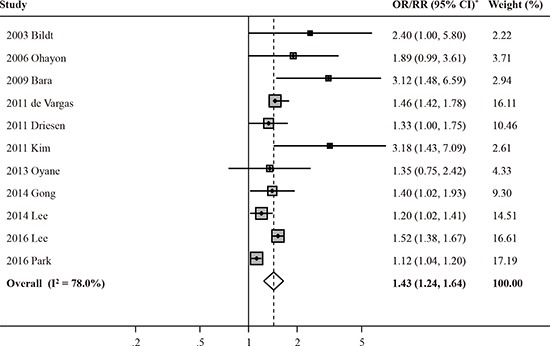- Record: found
- Abstract: found
- Article: found
Night Shift Work and Risk of Depression: Meta-analysis of Observational Studies

Read this article at
Abstract
This study aimed to assess whether night shift work is associated with the risk of depression by using a meta-analysis of observational studies. We searched PubMed and EMBASE in August, 2016 to locate eligible studies and investigated the association between night shift work and the risk of depression, reporting outcome measures with adjusted odds ratios (ORs) or relative risks (RRs) and 95% confidence intervals (CIs). In the meta-analysis of a total of 11 observational studies with 9 cross-sectional study, 1 longitudinal study, and 1 cohort study, night shift work was significantly associated with an increased risk of depression (OR/RR, 1.43; 95% CI, 1.24–1.64; I 2 = 78.0%). Also, subgroup meta-analyses by gender, night shift work duration, type of occupation, continent, and type of publication showed that night shift work was consistently associated with the increased risk of depression. The current meta-analysis suggests that night shift work is associated with the increased risk of depression. However, further large prospective cohort studies are needed to confirm this association.
Graphical Abstract

Related collections
Most cited references22
- Record: found
- Abstract: found
- Article: not found
Impacts of shift work on sleep and circadian rhythms.

- Record: found
- Abstract: found
- Article: found
Associations Between Night Work and Anxiety, Depression, Insomnia, Sleepiness and Fatigue in a Sample of Norwegian Nurses
- Record: found
- Abstract: found
- Article: not found